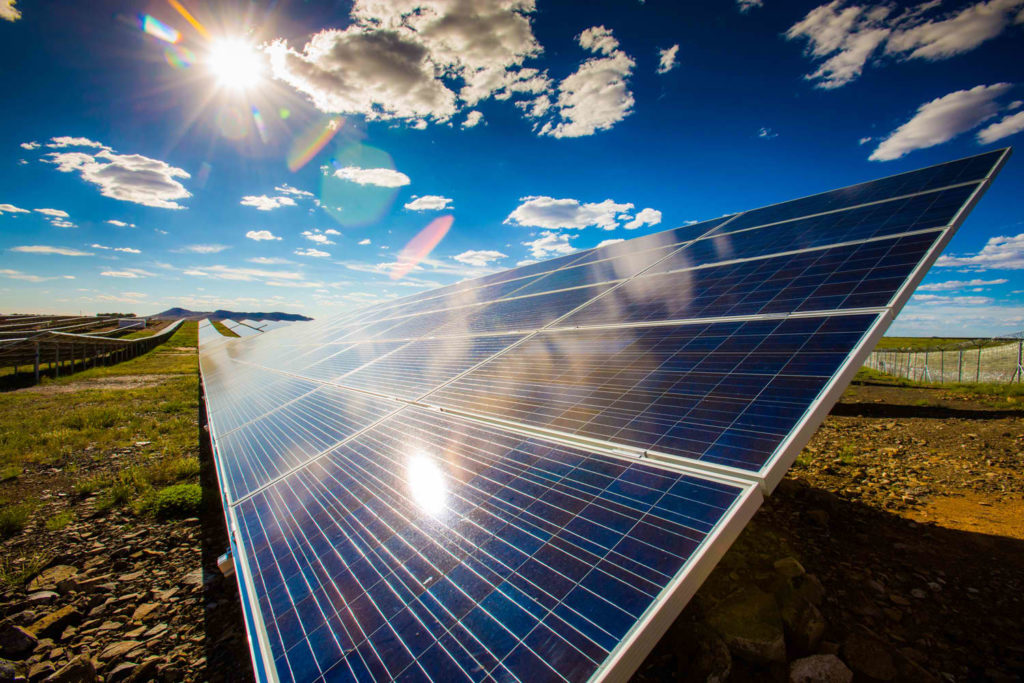Despite sitting on one of the world’s largest reserves of fossil fuels, Turkmenistan is moving ahead with efforts to diversify its economy and invest in environmental-friendly energy sources.
Representatives from the Turkmen State Energy Institute visited Vienna from May 9 – 12 to learn about best practices in the field of renewable energy usage from experts in Austria, a country where 75 percent of electricity is generated from renewables. The Organization for Security and Co-operation in Europe (OSCE) Centre in Ashgabat organized the four day event.
“Our Centre welcomes the efforts of the government of Turkmenistan to diversify its energy sources. Facilitating the exchange of sustainable energy solutions contributes towards achieving this goal,” said Natalya Drozd, head of OSCE Ashgabat, while addressing the Sustainable Energy Conference of the United Nations Industrial Development Organization in Vienna last Friday.
Turkmenistan has the world’s sixth largest proven natural gas reserves – roughly 32 trillion cubic meters – making its interest in developing alternative energy resources counter-intuitive. With a small domestic market – Turkmenistan is the smallest Caspian state, with about 5.3 million inhabitants – it has become the world’s seventh largest exporter of natural gas. In 2014, for example, the country sold around 41.6 billion cubic meters (bcm) of its total 69.3 bcm of output abroad, providing ample revenues for the government’s coffers.
By 2015 Turkmenistan’s competitive advantage for gas sales to Russia began to fade, being out-priced by neighboring Kazakhstan and Uzbekistan. That year exports dropped to 38.1 bcm, despite production rising to 72.4 bcm, acting as a wake-up call to officials in Ashgabat to look for ways to diversify the country’s economy.

With its subtropical desert climate, Turkmenistan possesses multiple natural advantages for developing renewable energy resource sectors. Annual sunshine duration in the country ranges anywhere from 2,768 total hours per year, comparable to that in the US state of Arkansas, to 3,150 hours, or slightly less than that in New Mexico. The Karakum Desert, which covers about 80 percent of the country’s land mass, has a potential for solar farming due to vacant land as well as its sand high content of silicon, a chemical element necessary for producing solar panels. At the same time, the western part of the country, bordered by the Caspian Sea, is known for strong wind currents that are sufficient for sustainable wind farming.
“Integrating renewable energy will not only free up other fossil energy sources to be used for exports or as back-up, but also increase benefits to the environment. Renewables will be beneficial in that they have lower costs, and utilize empty acreage in the country,” says Cyril Widdershoven, Director of the Dutch-based risk consultancy VEROCY.
Turkmenistani scientists have already developed a self-sustaining solar-wind complex, capable of providing water and power even in desert areas, solar-powered desalination stations and hot water facilities, and a solar greenhouse with heat-saving soil.
“Turkmenistan should set up a grand scale research program, focused on technology and knowledge that already exists in the country to support what could develop into a localized industry,” Widdershoven told Caspian News.
“Then they can introduce renewables into the economy, assess the pros and cons, and when the time is right, as costs are going down fast and technology changes quickly, the government should decide a long-term strategy.”







 Russian peacekeeping forces, deployed in the Karabakh (Garabagh) region of Azerbaijan since 2020, have commenced their withdrawal from the area.
Russian peacekeeping forces, deployed in the Karabakh (Garabagh) region of Azerbaijan since 2020, have commenced their withdrawal from the area.
 The number of evacuees from flooded areas in Kazakhstan has reached 97,852 people, including about 32,856 children since March 27.
The number of evacuees from flooded areas in Kazakhstan has reached 97,852 people, including about 32,856 children since March 27.
 Iran's senior military leaders described the drone and missile attack on Israel on April 14 night as “successful".
Iran's senior military leaders described the drone and missile attack on Israel on April 14 night as “successful".
 Azerbaijan officially unveiled the logo for the upcoming 29th session of the Conference of the Parties to the United Nations Framework Convention o...
Azerbaijan officially unveiled the logo for the upcoming 29th session of the Conference of the Parties to the United Nations Framework Convention o...
 Iranian President Ebrahim Raisi warned Israel that it would face a "real and extensive" response if it makes any "mistake" following Tehran’s missi...
Iranian President Ebrahim Raisi warned Israel that it would face a "real and extensive" response if it makes any "mistake" following Tehran’s missi...



